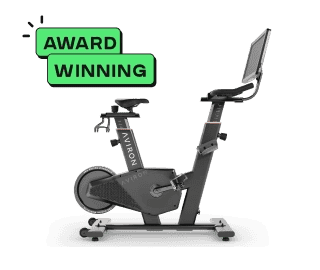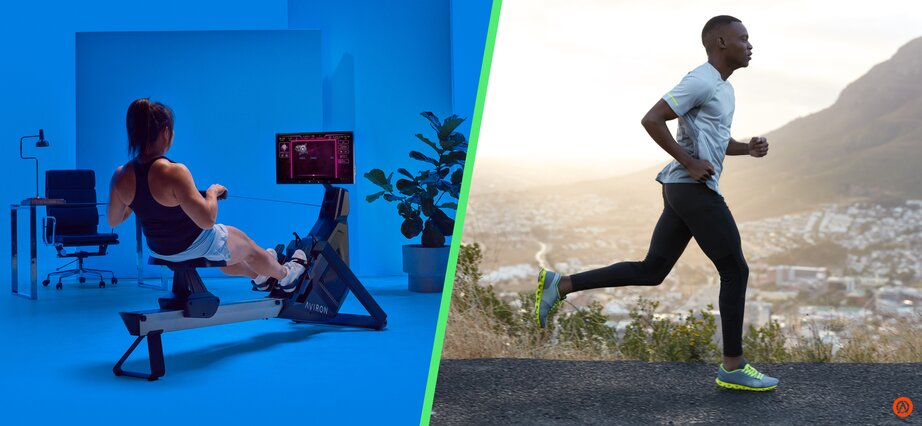With a sea of workout options at your fingertips, choosing between rowing and running might seem like just another drop in the ocean of fitness decisions. Yet, this choice could be a game-changer in how you meet your fitness goals, manage your time, and even enjoy your workouts. Both rowing and running offer unique benefits, challenges, and vibes, making them stand out in the crowded world of cardio options. But when it comes down to the specifics—calorie burn, impact on joints, and overall health benefits—the rowing vs. running debate gets interesting. Let's navigate through the noise to discover which exercise might just be your perfect fitness match.
Efficiency in Exercise: Calories Burned Rowing vs. Running
When it comes to burning calories, both rowing and running pack a powerful punch, but they burn through calories in different ways. Running is renowned for its calorie-burning efficiency, largely due to its high-impact nature. A vigorous run can burn a significant amount of calories in a short amount of time, making it an attractive option for those looking to lose weight or maintain fitness with time constraints.
Rowing, on the other hand, is a bit of an unsung hero in the calorie-burning department. It may not always match running's raw calorie expenditure, but it offers a comprehensive workout that engages over 80% of the body's muscles. From legs to arms, core to back, rowing ensures a full-body workout that can still torch a respectable number of calories, especially when done with intensity.
The Lowdown on Low Impact: Rowing's Gentle Touch vs. Running's Rigorous Rhythm
One of the key considerations in choosing between rowing and running is the impact on your body. Running's high-impact nature means it's excellent for building bone density and strength but can be tough on joints over time. It's a natural, primal movement that our bodies are designed for, yet the repetitive stress on knees, ankles, and hips isn't for everyone.
Rowing is celebrated for its low-impact credentials. Seated and sliding, rowing allows you to push your cardiovascular limits without putting undue stress on your joints. This makes it an ideal choice for individuals with previous injuries or those concerned about joint health, aiming for a sustainable, long-term fitness plan.
Cardiovascular Kings: Heart Health Benefits of Rowing and Running
Both rowing and running are titans of cardiovascular fitness. Running elevates the heart rate quickly, improving cardiovascular health through intense aerobic exercise. It's a straightforward way to get your heart pumping, improve blood circulation, and increase lung capacity.
Rowing, while also superb for cardiovascular health, adds an extra layer of resistance training due to the pulling motion against resistance. This not only strengthens the heart but also builds muscular endurance and strength, offering a two-for-one benefit that's harder to achieve with running alone.
Versatility and Accessibility: Fitting Rowing and Running Into Your Life
Accessibility is where running truly shines. With just a pair of sneakers, you can hit the road, trail, or treadmill. It's an exercise that can be seamlessly incorporated into any lifestyle or schedule, without the need for specialized equipment or spaces.
Rowing requires more specific equipment—a rowing machine—but modern gyms and fitness centers often provide these, making it more accessible than ever. While running takes you places, rowing offers the benefit of a stationary workout that can be just as mentally engaging and physically challenging, all without leaving your home or gym.
Building Strength and Endurance: More Than Just Cardio
Delving deeper, both activities not only improve cardiovascular health but also enhance physical strength and endurance. Rowing provides a dynamic, full-body workout, engaging muscles that running does not typically target as intensely. This makes rowing an excellent option for those looking to tone their entire body, improve posture, and boost overall muscle strength.
Running, celebrated for its simplicity, also offers unique benefits. It strengthens the lower body and core, improves bone density, and enhances cardiovascular endurance. For those who love the great outdoors, running provides a sense of freedom and exploration that stationary rowing can't match, contributing to mental well-being and stress reduction.
Mental Health and Well-being: Beyond the Physical
The psychological benefits of both rowing and running are profound. Rowing's rhythmic nature can serve as a meditative practice, reducing stress and enhancing focus. Running, known for triggering the "runner's high," improves mood and mental clarity, thanks to the endorphins released during the activity.
Mental Health Benefits of Rowing:
- Meditative Practice: The rhythmic and repetitive motion promotes mindfulness, reducing stress and enhancing mental clarity.
- Anxiety Reduction: The calming effect of being on the water and the sound of oars in water helps decrease anxiety levels.
- Social Connectivity: Participating in team rowing builds a sense of community and belonging, beneficial for mental health.
Mental Health Benefits of Running:
- Runner's High: Triggers the release of endorphins, creating feelings of happiness and euphoria.
- Improved Mood and Sleep: Regular running enhances mood, reduces symptoms of depression, and leads to better sleep patterns.
- Mindfulness and Focus: The repetitive nature allows for a form of mindfulness, focusing on breath and steps, which combats stress.
Conclusion: The Verdict on Rowing vs. Running
Ultimately, whether rowing or running is better for you depends on your personal fitness goals, preferences, and physical condition. Are you seeking a high-calorie burn and the simplicity of lacing up and stepping out the door? Running might be your path. Or do you crave a full-body, low-impact workout that respects your joints while still offering a challenging cardio session? Then, rowing could be your match.
In the end, the best workout is one that you enjoy and can commit to regularly. Why not mix it up? Incorporating both rowing and running into your fitness regimen could provide the variety your body loves and the comprehensive benefits you're seeking. After all, fitness is not about choosing sides—it's about finding what moves you.
FAQ
Which is better for weight loss, rowing or running?
Both rowing and running are effective for weight loss, as they burn a significant number of calories. Running may have a slight edge in calorie burning, but rowing offers a full-body workout that can also efficiently torch calories, especially when intensity and duration are matched. Ultimately, the best choice depends on your personal preferences, goals, and any physical limitations.
Is rowing a good alternative for those with joint issues?
Yes, rowing is an excellent low-impact exercise, making it a preferable choice for individuals with joint concerns or injuries. Unlike running, which is high-impact and can be tough on the knees, ankles, and hips over time, rowing provides a rigorous cardiovascular workout without placing undue stress on the joints.
Can incorporating both rowing and running into my fitness routine offer benefits?
Absolutely. Combining rowing and running can provide a comprehensive fitness routine that leverages the unique benefits of each. While running improves cardiovascular health, bone density, and offers a great calorie burn, rowing enhances upper body strength, offers low-impact exercise, and engages more muscle groups. Together, they can help improve overall fitness, prevent workout boredom, and reduce the risk of injury by diversifying your exercise regimen.
Read Next



